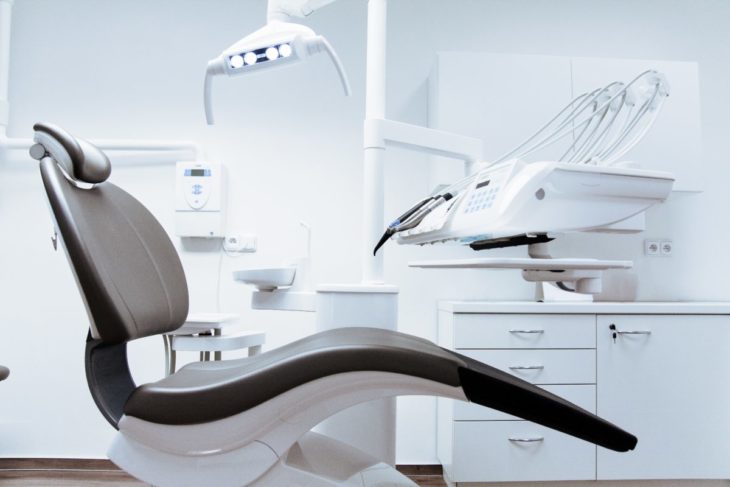Dental anxiety—the feelings of nervousness, anxiety, and fear about going to the dentist— is a relatively common and real case affecting so many people, both old and the young. Almost 10% of people experienced severe dental anxiety, which caused them to avoid dental visits altogether.
However, dentistry as a medical field has become more effective in addressing patient anxiety, and the following approaches prepared by the dentists at Skymark Smile Centre will help you run your dentistry more effectively.
Contents
1. Let them take the lead

Source: 123dentist
There are two things we commonly fear: the unknown and the loss of control. In a dental procedure, these two fears are often emphasized: the patient sits down in the dental chair with his mouth open, showing vulnerability and lack of control.
The solution? Let your patients know the following:
- Make sure they understand the procedure correctly. Tell them precisely what you’ll do (in terms they can understand), and what they should expect. If the treatment is going to be painful, say that in a realistic but considerate manner.
- Let the patient “start” the procedure, for example, by saying, “let me know when you are ready to start.” That might seem simple and probably useless but can be very useful compared to speaking in a commanding tone, “open your mouth.”
- Let them know that they can stop—or pause— the procedure. You can, for example, invent a time out signal together. That can be as simple as a raised a finger or making sounds with their mouths open. In most cases, they won’t end up using this time out, but the idea that they can pause can significantly help.
2. Provide Comfort

Source: mspmag
Let your patients talk about their anxiety. It can be as simple as asking, “are you ready for this?” or “how are you feeling?”.
The common misconception is that talking about our inner fear will only let the anxiety grows. However, the truth is the opposite, as research has suggested that allowing people to open up about their worries can provide calming effects. Having fears is often an embarrassing thing, especially for adult patients, and showing them that you are sympathetic so they don’t have to hide the anxiety can tremendously help.
Promise to be careful and gentle, and tell them that you wouldn’t cause unnecessary pain. Acknowledge the patient’s fears (for example, by saying, “it’s pretty common,” and tell anecdotes about your previous patient), and show sympathy.
The bottom line shows them that you are on their side, and this procedure is for their best.
3. Don’t let them wait for long

Source: onholdinc
More often than not, the anxiety buildup occurs when they have to wait for their turn at your office. Sometimes they even get so anxious that they leave and bail.
So, the better you can schedule your patients, the less you will have to deal with patient anxiety. Modern technologies like an online check-in system or online payment processing can help with this so that you can cut down wait times effectively.
Generally, the more anxious the patient is, you might want to schedule him/her in less busy days, or in time slots when delay factors are usually not there. For example, let this patient be the very first patient in the morning.
In the long run, however, the more efficient your office is regarding wait times, the better.
4. Use Humor and Chat The Patient

Source: bozemanfamilydentistry
The small talks can significantly help. You don’t have to tell hilarious jokes if that’s not your style—although if you can, it’s a plus point—. Simply asking the patient about their lives, how they met their spouse, how many kids they have, where did they go to school, and so on can help.
That helps with two different things: first, it helps the patient to focus on another thing besides their current anxiety. If you can get a patient to tell a story, it’s okay (be careful not to waste too much of your time so that the next patient does not wait too long). Second, this will make them feel more comfortable with you as the dentist.
5. Show Calmness and Professionality

Source: etwalldentalpractice
Remember that you are the leading cause of their anxiety, and nothing’s worse than when you show any trace of uncertainty and even fear. Be calm in your speech and show that you know what you are doing, as opposed to a stiff, robotic approach.
Also, it’s essential to look professional. Look and smell clean, and make sure to wear professional, neat attire.
6. Redesign Your Office

Source: top5
Having a more calming office design can tremendously help in reducing patient anxiety. Paint your walls with calming, relaxing colors; this can include light-blue or cream, among others. Avoid sharper colors that might increase anxiety. Lighting is also essential, especially if you can accommodate natural lights in your office. If not, you might want to invest in the more cooling shade of bluish-white lighting that where studies have suggested to promote calmness.
Create distractions around the office so the patient won’t focus on their internal anxiety. That can mean investing in beautiful pieces of furniture around the reception space and the office and have calming music playing.
Televisions situated on the ceiling of the office can also be useful, so the patient can watch TV as a distraction during the treatment.
There are various ways you can be creative in designing your office, so it’s time to experiment.
7. Advanced Methods and Therapies

Source: lancasterdental
When all things fail, there are advanced therapies and alternative methods we can try, such as:
- Cognitive Behavioral Therapy (CBT), which is, discussing anxiety and reframing it more positively.
- Hypnosis: hypnotherapy can be an effective method to deal with patient anxiety. You might want to check this study on how to apply anesthesia in dentistry.
- VR goggles: letting the patient immersed in a VR scene can help in managing anxiety and pain during the procedure.
NLP (Neuro-Linguistic Programming) techniques can be incorporated to reshape the patient’s perception and attitude towards the dentist.
Conclusion
Dental anxiety is real, and it affects over 17% of the population. Managing stress from our patients can help in increasing the success of treatments and procedures, as well as improving our overall service excellence to guarantee future appointments.
